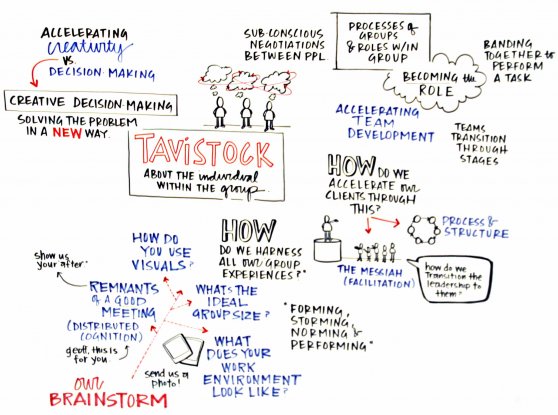Another Friday, another attempt here at Collective Next to practice what we preach and gather together to think better and move innovative ideas forward.
Today we went a little meta, that is, we—a group of professionals engaged in the formal practice of helping other groups of people collaborate most effectively in order to find the most creative solutions to their most vexing challenges—had a wide ranging discussion about what it really takes to help a group of individuals rapidly become a team, collaborate effectively, and be more creative than they ever thought possible. (Navel gazing, you say? Maybe, but hey, it’s Friday.)
Of course, since about the mid-morning of time, there have been millions of words written to describe and illuminate this topic, and scores of models created to help people understand and perform better in groups. And we touched on a good number of them—from Kurt Lewin who coined the phrase group dynamics, to Bruce Tuckman’s stages of group development, Forming-Storming-Norming-Performing, to Tavistock Groups, to the question “What really, truly, unequivocally is the ideal working group size?” we zipped, hovered and dipped like hummingbirds in this garden of ideas. The scribing below captures the real time notes our conversation.
And as our meeting wound down, one of our number posed a simple and interesting question: What are the remnants of a successful group interaction? Besides the obvious work product, innovation, killer new app, besides the formal output of a group meeting, what’s left behind and what does it tell? What’s the story of the detritus? What’s the imprint? What would tell Sherlock Holmes or Daryl Zero that something good happened here?
We want to explore this further, with you, so we’ll be in touch.
Back





